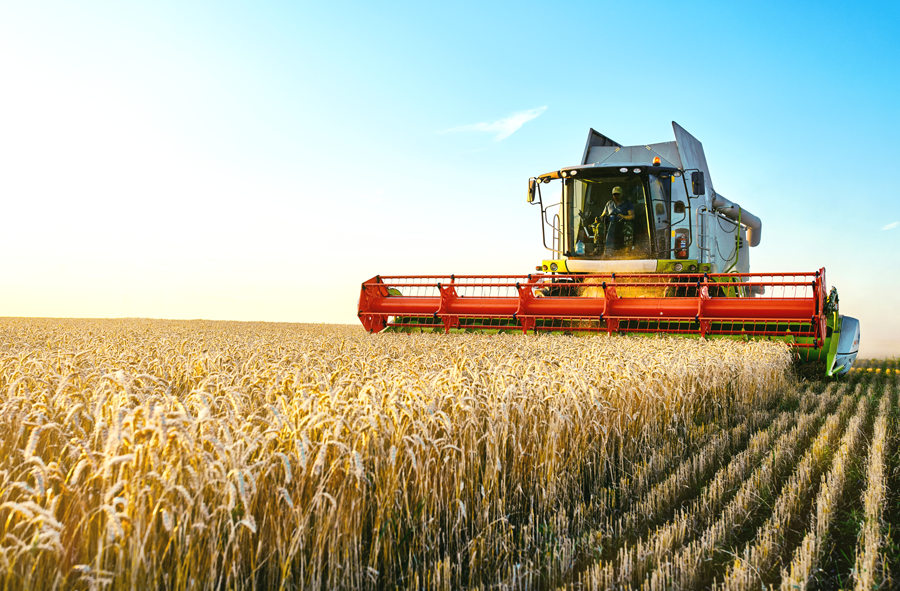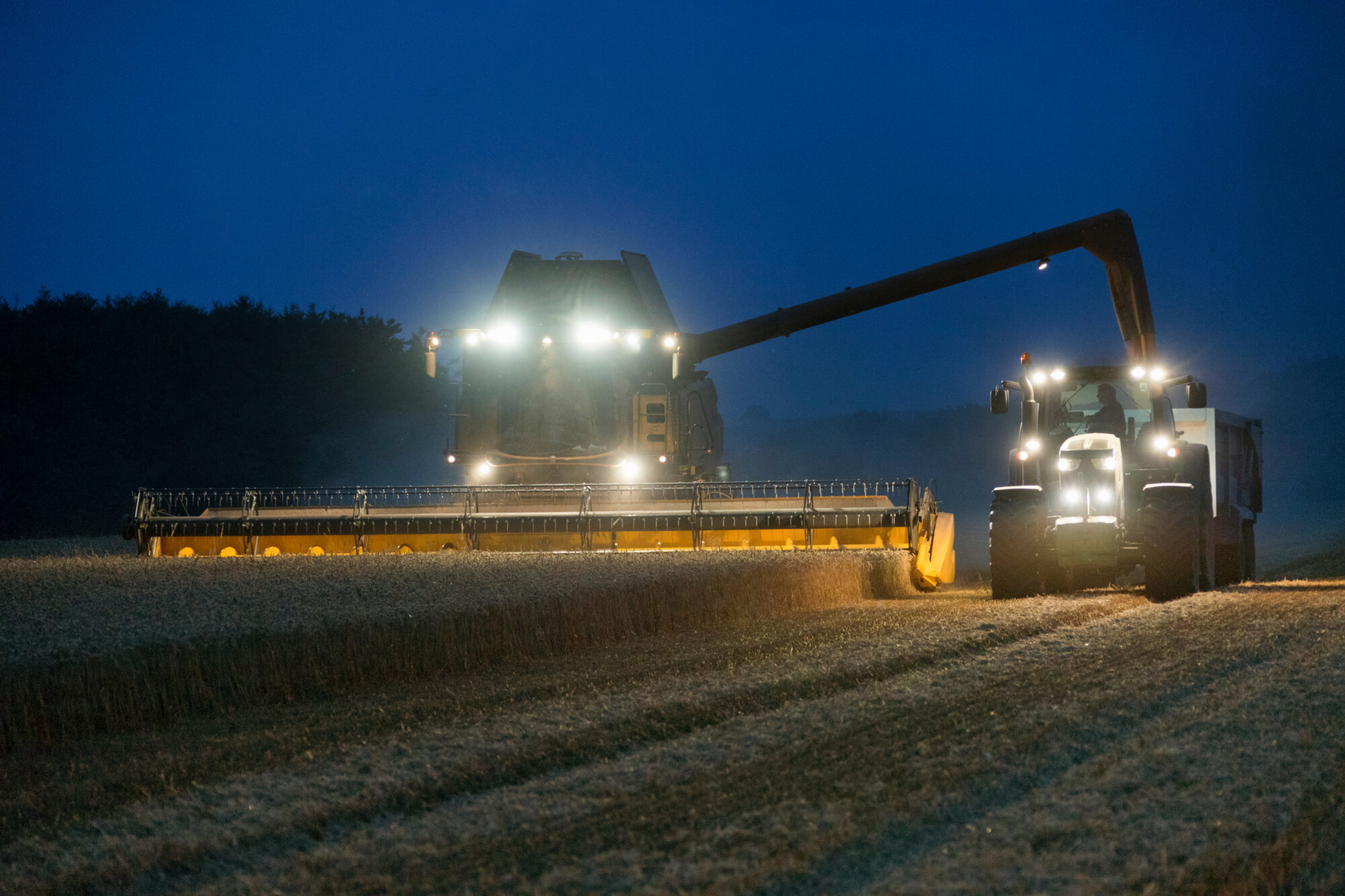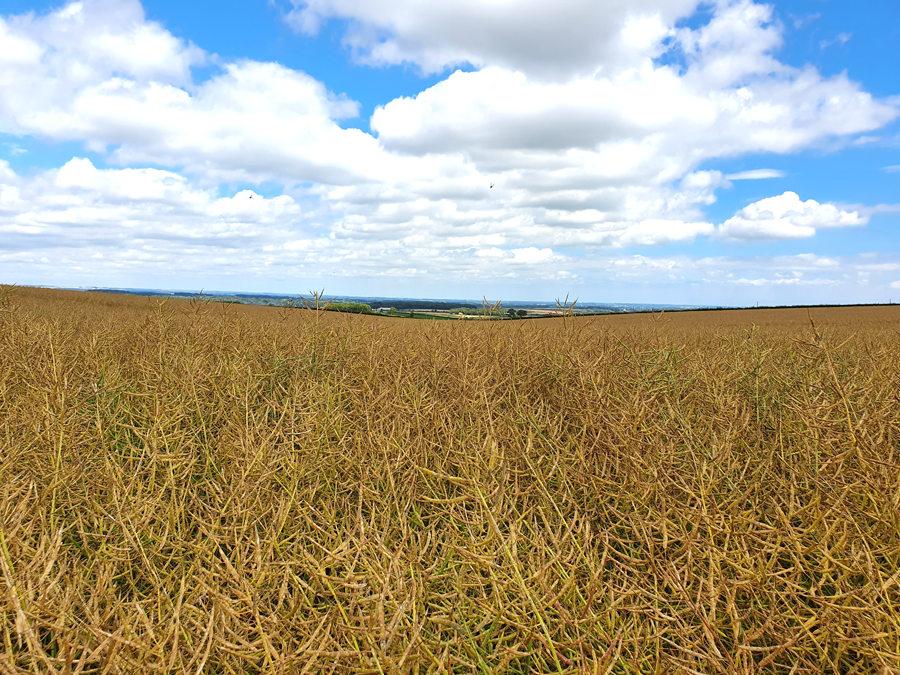Second slowest start to winter wheat harvest in last eight years
23rd August 2021
Catchy weather conditions mean farmers are having to roll out the combines at every available opportunity in order to bring in this year’s winter wheat harvest, while winter barley and OSR are almost complete.
At the beginning of August, AHDB hosted an online harvest update, which was supposed to include live video chats with a number of its Monitor Farm farmers. However, with the sun shining at the time, and serious rainfall predicted across the UK later that week, some of the farmers who had been due to join the webinar had to call in the old-fashioned way, direct from their combine cabs – meaning the update was certainly live and up-to-the-minute.
At the time, the wheat and OSR harvests had only just begun – although the winter barley harvest was nearing completion in many areas.
The general consensus from all farmers involved was that yields and overall harvest area were looking far more promising than last year. With a larger area of spring barley having been grown compared to recent years, some had harvested it green and were selling it on as wholecrop or foraging it and putting in the silo, due to the shortage of grass in many areas.
David Eudall of AHDB believed at the time that the UK is inching towards a 15 million tonne wheat crop – desperately needed as we’re not blessed with any stock or carry-out from last harvest. Haulage problems were mentioned, with the shortage of drivers, due primarily to the ‘pingdemic’, meaning lorries are having to do ridiculously long journeys in order to move grain into the deficit areas. General expectation for the UK is there will be a comfortable but not bountiful level of supply, with an increased demand being seen particularly from livestock and the UK’s two ethanol plants.
OSR results at the time were looking more variable, and Mr Eudall pointed out that the UK has lost around 45,000ha of planted area due to last year’s poor performance, so will have to import vast quantities of rape in order to meet domestic demand. From a gross margin point of view, Mr Eudall believes winter OSR is still one of the best crops you can grow – if you can grow it. It’s down to the risk versus reward element.
There is currently a £60/t discount for 2022 OSR futures, looking at around £400/t for next November delivered into Erith. There’s no guarantee that these prices will be available, but in Mr Eudall’s opinion, we’ll see the OSR area increase for next year, although it won’t totally cover the area that was lost and will remain a deficit area in the UK for years to come.
Harvest so far
In general, harvest so far has been very stop/start, leading to frustration and the cutting of only pockets of winter wheat – much of which has not been fully ripe. On 17th August, AHDB reported that around 20% of the national winter wheat crop had been combined – 39 percentage points behind last year’s rate and 24 percentage points behing the five-year average. In the last eight years, only the 2017 campaign saw a slower start, being at 11% by this point.
Meanwhile, the winter barley harvest is nearly complete, slightly ahead of the five-year average, and even Scotland and Wales are in sight of the finishing line. AHDB is reporting winter barley to be yielding at an average of 6.9–7.1t/ha (6.8t five-year average), with specific weights being low in most regions and low grain nitrogen percentages also being recorded.
Winter OSR harvest is looking good progress-wise, at just over 83% cut by 17th August, and many areas having been cleared completely.
Winter OSR is yielding at around 3.3–3.5t/ha, so decidedly fair to middling, although the yields are inconsistent across the UK due to the varying levels of CSFB damage. Oil content is averaging at around 44%, with lower levels being reported where desiccation was a tad early.
Fluctuations in yield and quality
Winter wheat is showing significant fluctuations in yield, with current reported figures ranging from 6–12t/ha, although AHDB says there are plenty of early reports at over 10t/ha which is promising. However, quality is also hugely variable – ranges of 67–80kg/hl are being reported, with milling varieties demonstrating the better weights. Protein levels are acceptable, sitting at around 11–13%, although AHDB is suggesting that protein levels have been sacrificed in some areas for better yields, and some high-yielding crops are expected to fail specification.
At the time of writing, a small proportion of spring barley fields have seen the combine, with only wholecrop having been harvested in Wales so far, and Scotland yet to start – all-in-all, with around 12% of the crop cleared to date, spring barley harvest is sitting at around 9 percentage points behind the five-year average, and grain dryers are likely to be put to use due to the wet and humid weather slowing the natural drying process.
Farm yields reported so far have ranged from 5.1–10t/ha, with milling yields typically 1t lower than feed, and heavy land yielding higher than light land, to be expected. Sample sizes for quality are small, but early indications suggest grain nitrogen is low.
Do you have an opinion or something to add for our next harvest update? Please email editor@farmersguide.co.uk



